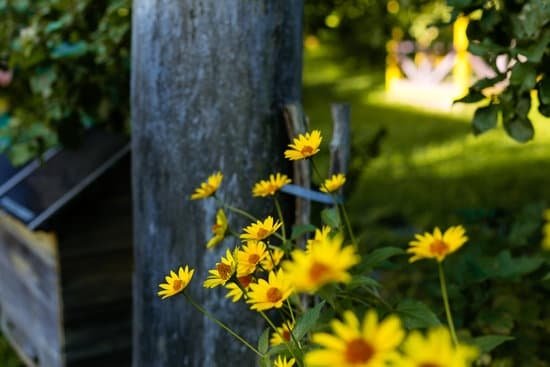Are you looking for vegetable gardening ideas at home? Vegetable gardening is a rewarding and sustainable activity that allows you to grow your own produce right in your backyard. Not only does it provide fresh, healthy vegetables for your family, but it also offers numerous benefits for the environment and your overall well-being.
Growing your own vegetables at home can significantly reduce your carbon footprint by minimizing the need for transportation and packaging involved in store-bought produce. Additionally, cultivating a vegetable garden allows you to avoid harmful pesticides and chemicals, giving you full control over what goes into the soil and onto your plants.
The act of gardening itself has been proven to reduce stress, improve mental health, and increase physical activity. With these benefits in mind, it’s no wonder that many people are turning to vegetable gardening as a fulfilling and enjoyable hobby.
Whether you have a spacious yard or just a small balcony, there are plenty of creative ways to incorporate vegetable gardening into your home. So let’s delve into the world of vegetable gardening at home and explore how you can get started on this enriching journey.
Selecting the Right Location for Your Vegetable Garden
When it comes to starting your own vegetable garden at home, one of the most crucial steps is selecting the right location. The success of your garden will largely depend on this choice, so it’s important to consider a few key factors.
First and foremost, you’ll want to choose a spot that receives plenty of sunlight throughout the day. Most vegetables need at least 6-8 hours of direct sunlight to thrive, so be sure to observe different areas of your yard before settling on a location.
In addition to sunlight, soil quality and water access are also important considerations. Vegetables generally prefer well-draining soil that is rich in organic matter, so take note of any areas in your yard where the soil may need amending. Additionally, you’ll want to ensure that your chosen location has easy access to water, as vegetables typically require consistent watering, especially during hot summer months.
Once you’ve taken these factors into account, you’ll be better equipped to select the right location for your vegetable garden at home. Keep in mind that some vegetables may have specific requirements when it comes to sunlight or soil type, so it’s always a good idea to research the needs of the specific plants you plan to grow.
| Location | Sunlight Availability | Soil Quality | Water Access |
|---|---|---|---|
| Backyard | 6-8 hours/day | Rich but slightly compacted | Access from outdoor faucet |
| Side Yard | 4-6 hours/day | Poor drainage | No direct water source nearby |
| Front Yard | 8-10 hours/day | Lawn with unknown quality | No access; would need hose extension |
Planning and Designing Your Vegetable Garden
When it comes to vegetable gardening ideas at home, planning and designing your garden space is essential for a successful harvest. Here are some tips for maximizing space and productivity in your vegetable garden:
- Use raised beds or containers: Utilizing raised beds or containers can help maximize the space in your garden while also providing better soil drainage and aeration for your vegetables. This is particularly useful if you have limited space or poor soil quality in your backyard.
- Companion planting: Consider planting complementary vegetables next to each other to benefit from natural pest control, improved flavor, and better use of the available space. For example, planting basil next to tomatoes can improve the taste of the tomatoes and deter pests.
- Utilize vertical gardening: Growing certain vegetables on trellises or using vertical structures can help save space and provide support for vining plants like cucumbers, peas, and pole beans.
- Create pathways: By designing pathways within your garden, you can easily access all areas for planting, maintenance, and harvesting. Additionally, clear pathways can prevent trampling on delicate plants.
By carefully planning and designing your vegetable garden using these ideas, you can make the most of your available space and create a productive and beautiful garden that provides fresh produce throughout the growing season.
Choosing the Best Vegetables to Grow at Home
Choosing the right vegetables to grow at home is an important step in creating a successful and bountiful vegetable garden. Whether you are a beginner or an experienced gardener, selecting the best vegetables for your climate and skill level can make a big difference. Here are some easy-to-grow vegetables that are perfect for beginners:
- Tomatoes: Tomatoes are a popular choice for home gardens and can be grown in containers or directly in the ground.
- Green beans: Green beans are low-maintenance and can produce a generous harvest throughout the growing season.
- Radishes: Radishes are fast-growing and can be harvested within just a few weeks of planting, making them ideal for beginner gardeners.
In addition to these easy-to-grow options, it’s also important to consider which vegetables thrive in your specific climate zone. For example, if you live in a cooler climate, root vegetables like carrots and beets may be better suited for your garden. On the other hand, if you have a warmer climate, peppers and eggplants may be more successful.
When selecting vegetables for your garden, it’s also helpful to consider the space available. If you have limited space, lettuce, spinach, and herbs are great choices for container gardening or small raised beds. If you have more room to work with, larger plants like zucchini and cucumber can also be rewarding additions to your home vegetable garden.
By carefully choosing the best vegetables to grow at home based on your skill level, climate, and space available, you can set yourself up for a successful and enjoyable gardening experience. With the right selection of vegetables, you’ll soon be enjoying the satisfaction of harvesting and enjoying your own homegrown produce.
Preparing the Soil for Your Vegetable Garden
Before you start planting your vegetable garden, it’s crucial to prepare the soil properly to give your plants the best chance to thrive. The first step is to test your soil to determine its pH and nutrient levels.
This will help you understand what amendments or fertilizers are needed to create the optimal growing environment for your vegetables. You can purchase DIY soil testing kits at your local gardening center or send a sample to a lab for a more comprehensive analysis.
Once you have the results of your soil test, you can then proceed with improving the quality of your soil. Adding organic matter such as compost, aged manure, or shredded leaves can enhance soil structure, drainage, and nutrient content. Additionally, using natural fertilizers like bone meal or fish emulsion can provide essential nutrients for healthy plant growth without harmful chemicals.
It’s important to mulch your vegetable garden as well to help retain moisture, suppress weeds, and regulate soil temperature. This not only benefits the overall health of your plants but also reduces the need for frequent watering and weeding. With proper soil preparation, you can create a nutrient-rich foundation for your vegetable garden that will support vigorous plant growth and abundant harvests.
| Soil Preparation Technique | Benefits |
|---|---|
| Adding compost and organic matter | Enhances soil structure and provides essential nutrients |
| Applying natural fertilizers | Promotes healthy plant growth without harmful chemicals |
| Mulching the garden beds | Retains moisture, suppresses weeds, and regulates soil temperature |
Planting and Maintaining Your Vegetable Garden
Best Practices for Planting Seeds and Seedlings
When it comes to planting your vegetable garden, it’s important to follow best practices to ensure a successful harvest. When planting seeds, be sure to read the instructions on the seed packet carefully. Different seeds have different requirements in terms of planting depth, spacing, and soil conditions.
In general, most seeds can be planted at a depth that is two to three times their diameter. Be sure to water the newly planted seeds gently and consistently to keep the soil moist for germination.
If you’re using seedlings instead of seeds, handle them with care when transplanting them into your garden. Dig a hole that is slightly larger than the root ball of the seedling and gently place it in the hole. Press the surrounding soil firmly around the base of the plant and water it well. It’s important to avoid damaging the delicate roots of the seedlings during this process.
Tips for Watering, Weeding, and Pest Control
Proper watering is crucial for maintaining a healthy vegetable garden. Different vegetables have different watering needs, so it’s essential to research each type that you’re growing. Generally, vegetables need about 1-2 inches of water per week either from rainfall or irrigation. It’s best to water in the morning or late afternoon to reduce evaporation loss.
Weeding is another essential task in maintaining your vegetable garden. Weeds compete with your vegetables for nutrients and water, so it’s important to regularly remove them from your garden beds. Consider using mulch as a natural weed barrier that also helps retain moisture in the soil.
Pest control is also an important aspect of maintaining a healthy vegetable garden at home. Keep an eye out for common pests such as aphids, caterpillars, and slugs which can damage your plants. Consider using organic methods such as companion planting or mild insecticidal soaps to keep these pests at bay.
The Importance of Crop Rotation
Crop rotation is a practice that involves changing where you plant specific vegetables in your garden from year to year. This helps prevent disease and nutrient depletion in the soil by moving plants within related families around your garden plot each season. For example, if you grew tomatoes in one bed last year, consider planting them in a different location this year and rotating with other types of vegetables like leafy greens or legumes.
By following these techniques for planting and maintaining your vegetable garden at home, you’ll be well on your way to enjoying a bountiful harvest of fresh homegrown vegetables.
Harvesting and Preserving Your Homegrown Vegetables
Knowing when to harvest your homegrown vegetables is essential for enjoying the freshest produce from your garden. Different vegetables have different signs indicating they are ready to be harvested. For example, tomatoes should be picked when they are fully colored and firm, while lettuce should be harvested when the leaves are large and crisp. It is important to research the specific harvesting requirements for each vegetable you are growing in order to get the best results.
After harvesting your homegrown vegetables, it is important to preserve them properly in order to enjoy them for an extended period of time. Techniques such as canning, freezing, and pickling can help you preserve your vegetables so that you can continue to enjoy them even after the growing season has ended.
Additionally, proper storage methods such as keeping root vegetables in a cool, dark place and storing leafy greens with a damp cloth can also extend the life of your harvest.
In addition to preserving your homegrown vegetables through traditional methods, there are also creative ways to use excess produce. Consider making homemade salsa with your surplus tomatoes or creating a batch of zucchini bread with extra zucchinis. By finding creative ways to use up your harvest, you can minimize waste and fully enjoy the fruits of your labor in your vegetable garden at home.
Creative and Sustainable Vegetable Gardening Ideas
Vertical Gardening
One creative and space-saving way to grow your own vegetables at home is through vertical gardening. This method involves growing plants on a vertically inclined surface, such as a wall or trellis, utilizing the space efficiently. Some easy-to-grow vegetables that are perfect for vertical gardening include tomatoes, cucumbers, and beans. By implementing this technique, you can maximize your gardening space and create a visually appealing garden.
Raised Beds
Another sustainable option for vegetable gardening at home is using raised beds. Raised beds provide better drainage, warmer soil, and easier access for tending to your plants. You can construct raised beds using various materials such as untreated wood, bricks, or even recycled materials like old tires or pallets. This method not only allows for better control of the soil quality but also makes it easier to keep pests away from your crops.
Container Gardening
For those with limited outdoor space, container gardening is an excellent choice for growing vegetables at home. Almost any vegetable can be grown in a container, making it a versatile option for urban or apartment dwellers. Vegetables like lettuce, radishes, peppers, and herbs are ideal for container gardening. It also gives you the flexibility to move your plants around to optimize sunlight exposure and create an attractive display on balconies or patios.
By incorporating these creative and sustainable vegetable gardening ideas at home into your gardening routine, you can enjoy fresh produce while maximizing space efficiency and reducing environmental impact through eco-friendly practices. These methods offer not only practical solutions but also a visually appealing approach to enjoying the benefits of homegrown vegetables.
Conclusion
In conclusion, vegetable gardening at home offers a multitude of benefits that go beyond just the fresh produce. The satisfaction of being able to grow your own food, the joy of seeing your efforts come to fruition, and the peace of mind knowing exactly where your food comes from are just a few of the many reasons to consider starting your own vegetable garden. With the right planning, design, and care, anyone can experience the rewards of homegrown vegetables.
When selecting the right location for your vegetable garden, it’s important to take into account factors such as sunlight, soil quality, and water availability. By carefully planning and designing your garden space, you can maximize productivity regardless of any space constraints you may have. And with a wide selection of easy-to-grow vegetables for beginners as well as those suitable for different climate zones, there is something for everyone to grow in their home garden.
Once your vegetables are ready for harvest, there’s nothing quite like enjoying the fruits of your labor straight from the garden. Whether you choose to preserve and store them or enjoy them fresh off the vine, there’s a sense of pride in knowing that you grew them yourself. Embracing creative and sustainable vegetable gardening ideas such as vertical gardening or eco-friendly practices also adds an extra layer of fulfillment to the overall experience.
So why wait? Start implementing some vegetable gardening ideas at home today and experience the joy of growing your own food firsthand.
Frequently Asked Questions
What Is a Good Layout for a Vegetable Garden?
A good layout for a vegetable garden includes proper spacing between rows and plants to allow for adequate sunlight, air circulation, and easy access for maintenance. Raised beds or containers can also help with organization and drainage.
What Are the 10 Easiest Vegetables to Grow?
The 10 easiest vegetables to grow are typically those that require minimal care and have a short growing season, such as lettuce, spinach, radishes, carrots, green beans, zucchini, bell peppers, tomatoes, cucumbers, and herbs like basil or cilantro. These plants are often suitable for beginners with limited gardening experience.
What Is the Best Vegetable Garden for Beginners?
The best vegetable garden for beginners is one that includes low-maintenance crops like leafy greens, root vegetables, and herbs. Starting with a small plot or container garden can help new gardeners learn the basics of soil preparation, planting, watering, and pest management without becoming overwhelmed.
Consider choosing vegetables that are well-suited to your local climate and growing conditions for the best chance of success.

Welcome to my gardening blog! I am passionate about plants and enjoy sharing my knowledge and experiences with others. In this blog, I will write about everything related to gardening, from tips on how to get started to updates on my own garden projects.





